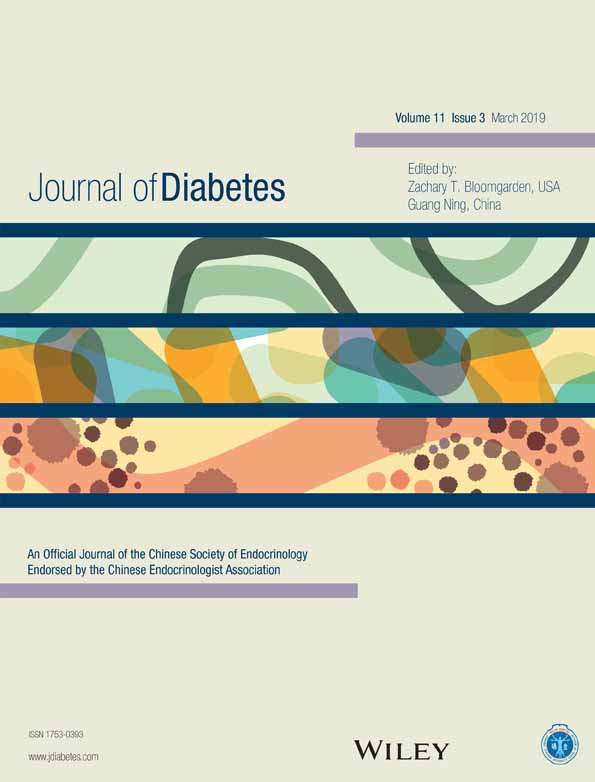Dose–response association between the triglycerides: High-density lipoprotein cholesterol ratio and type 2 diabetes mellitus risk: The rural Chinese cohort study and meta-analysis
甘油三酯:高密度脂蛋白胆固醇比值和2型糖尿病风险之间的剂量反应关系:中国农村人群队列和meta分析
Abstract
enBackground
High triglyceride (TG) and low high-density lipoprotein cholesterol (HDL-C) levels are traditional risk factors for type 2 diabetes mellitus (T2DM). This study evaluated the dose–response relationship between the TG/HDL-C ratio and T2DM risk.
Methods
The study included 11 946 adults without baseline diabetes from the Rural Chinese Cohort Study. Cox proportional hazards regression was used to investigate the association between the TG/HDL-C ratio and T2DM. The dose–response relationship was evaluated by restricted cubic spline analysis. In addition, pooled odds ratios (OR) were calculated with a random-effects model in a meta-analysis including the present study and another three eligible articles.
Results
During 2007–14, 618 patients with T2DM were identified (9.68/1000 person-years). People in the highest TG/HDL-C ratio quartile had a higher T2DM risk than those in the lowest quartile (adjusted hazard ratio [aHR] 2.11, 95% confidence interval [CI] 1.55–2.86); however, the association between the TG/HDL-C ratio and T2DM was stronger in females than males (aHR 1.27 [95% CI 1.16–1.39; and 1.19 [95% CI 1.04–1.37], respectively). In body mass index-specific analysis, the association was stronger in normal weight than overweight/obese people. The dose–response meta-analysis showed that a 1-unit increment in the TG/HDL-C ratio increased the T2DM risk by 28% (95% CI 20%–36%), with a positive linear relationship (Plinear = 0.326).
Conclusions
The TG/HDL-C ratio was an independent risk factor of T2DM, especially in females, and linearly increased the risk of T2DM; thus, it may be a useful indicator to identify future T2DM.
Abstract
zh摘要
背景
高甘油三酯(TG)和低高密度脂蛋白胆固醇(HDL-C)水平是2型糖尿病(T2DM)的传统危险因素。本研究评估了TG/HDL-C比值和2型糖尿病风险之间的剂量反应关系。
方法
本研究从中国农村人群队列中筛选11946例基线无糖尿病的研究对象。利用Cox风险比例模型估计TG/HDL-C比值和2型糖尿病之间的关联。剂量反应关系由限制性立方样条分析计算。此外,在meta分析时,采用随机效应模型计算了纳入本研究和另外3个符合条件的文章的合成优势比。
结果
在2007年至2014年期间,618例T2DM被识别(9.68/1000人年)。TG/HDL-C比值最高的四分位数组比最低组具有更高的T2DM风险(调整后风险比[aHR] 2.11,95%置信区间[CI] 1.55-2.86);然而,这种关联在女性人群中比在男性人群中更强(aHR 1.27[95% CI 1.16-1.39] 和1.19 [95% CI 1.04-1.37])。在体质比特异性分析时,这种关联在正常体重人群中比在超重/肥胖人群中更强。剂量反应meta分析显示,TG/HDL-C比值和T2DM风险存在线性剂量关系(Plinear = 0.326),1个单位的比值增量会增加28%(95% CI 20%-36%)的T2DM风险
结论
TG/HDL-C比值是T2DM的一个独立的风险因素,特别是在女性中,并且呈线性增加T2DM的风险。因此,它可能是一个有效的用于识别未来发生T2DM的指标。




